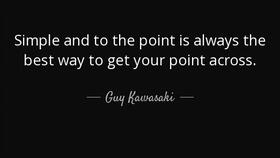Introduction
Fishing, an ancient pastime that has stood the test of time, is not just a leisure activity but also a skill that can be honed and mastered. Whether you are a beginner looking to cast your line into the water for the first time or an experienced angler seeking to refine your technique, understanding the basics and advanced tips of fishing can significantly enhance your experience. In this article, we will delve into the world of fishing, offering a comprehensive guide on the essential tips and techniques that will help you become a more proficient angler.
Choosing the Right Gear
The first step in mastering the art of fishing is to ensure you have the right gear. Here are some key items to consider:
- Rod and Reel: The choice of rod and reel depends on the type of fishing you plan to do. For freshwater fishing, a spinning rod and reel are a versatile choice, while a baitcasting rod and reel are better for larger fish in saltwater.
- Line: The type of line you use should match the fish you are targeting. Monofilament is the most common type, offering good flexibility and stretch, while fluorocarbon is more invisible to fish and has less stretch.
- Hooks: The size and type of hook should correspond to the size of the bait and the species of fish you are targeting.
- Lures and Bait: Choose lures and bait that mimic the natural prey of the fish you are trying to catch.
Learning the Basics of Casting
Casting is a fundamental skill in fishing. Here are some tips to improve your casting technique:
- Practice Casting: Spend time practicing your casting technique on dry land to get a feel for the rod and reel.
- Choose the Right Casting Technique: There are various casting techniques, such as the overhead cast, sidearm cast, and roll cast. Choose the one that suits your fishing environment and the type of fish you are targeting.
- Keep Your Arm Close to Your Body: This will help you maintain control and accuracy.
Understanding Fish Behavior

To be a successful angler, it's important to understand the behavior of the fish you are targeting. Here are some key points to consider:
- Seasonal Patterns: Fish often move to different areas depending on the season. Research the seasonal patterns of the fish you are targeting.
- Water Temperature: Fish are highly sensitive to water temperature. Understanding how temperature affects fish behavior can help you choose the best spots and times to fish.
- Food Sources: Knowing what the fish are eating will help you choose the right bait or lure.
Using the Right Bait and Lure
The right bait or lure can make all the difference in your fishing success. Here are some tips:
- Match the Bait to the Fish: Use the type of bait that the fish you are targeting would naturally eat.
- Experiment with Different Lures: Sometimes, the fish might be more interested in a particular color, size, or type of lure. Experiment to see what works best.
- Use Live Bait: Live bait can be more effective than artificial lures, especially for larger fish.
Reading the Water
Being able to read the water is a crucial skill for any angler. Here's how to do it:
- Observe the Water: Look for signs of fish activity, such as splashes or bubbles.
- Identify Structure: Structure in the water, such as rocks, logs, or weed beds, can be prime spots for fish to hang out.
- Understand Currents: Currents can affect where fish are located. Fish often stay in areas where the current is slower.
Patience and Persistence
Lastly, fishing is a test of patience. Here are some tips to keep in mind:
- Be Patient: Fish don't always bite immediately. Be patient and wait for the right moment.
- Stay Persistent: If you're not having luck, try changing your location, bait, or technique.
Conclusion
Fishing is an activity that combines relaxation with the thrill of the hunt. By following these tips and techniques, you can enhance your fishing experience and increase your chances of success. Remember, the key to mastering the art of fishing is practice, patience, and a willingness to learn. Happy fishing!












